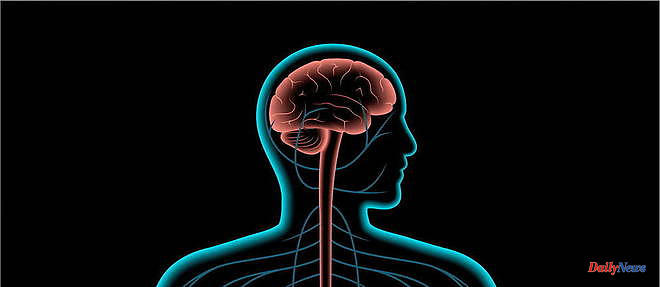Pain, as such, is not pathological. It even has a crucial function: that of "sounding the alarm" and drawing attention to a problem in the body, which must be dealt with as soon as possible. When this pain persists, settles – we speak of chronic pain beyond three to six months of symptoms –, however, it loses all utility. Worse, it is then only a burden, which can invade everything and make life hell. How, then, to relieve? Of course, there are several classes of painkillers. But the opioid crisis in the United States is there to remind us that these drugs cannot be the alpha and omega of care.
French doctors are also seeking to get out of "all chemistry" and to favor non-drug treatment. Solutions – whose effectiveness is more or less proven – such as meditation, hypnosis, cognitive therapies, or even music therapy, complete the arsenal. And against certain specific types of pain, neuromodulation, which is based on the therapeutic use of electrical influx.
"Pain has a chemical component, it is mediated and conveyed in the synapses and along the nerves by neurotransmitters, in the spinal cord and in the brain, recalls Dr. Marc Lévêque, neurosurgeon in Marseille, author of Libérons-nous de pain, (Buchet-Chastel editions) published in 2022 and which intervenes during the Neuroplanète forum in Nice. This produces an action potential, that is, electricity. Analgesic drugs – opioids, morphine, morphine receptors or antidepressants – act on this chemical component.
One of the advantages of neuromodulation is its targeted action. A drug passes into the bloodstream, exerts a general and non-specific action on all synapses. By "hitting it wide", analgesic molecules therefore expose you to many - and sometimes serious - side effects. Neuromodulation makes it possible to focus on the neurons responsible for the torments of patients. "It's always groups of neurons that are involved either in pain, or in the transmission of that pain, or in the mechanisms that fight against pain. And we know their location, explains Dr. Denys Fontaine, neurosurgeon at the University Hospital of Nice. It is on these groups of neurons specifically, these bundles of neuronal extensions, that we will place electrodes. It remains to be decided how to "reach" the neurons in question.
In practice, several techniques exist. Invasive stimulation, first: electrodes are surgically implanted in the brain – we speak of deep brain or cortical stimulation – or in the spinal cord – this is spinal cord stimulation. Non-invasive stimulation is also possible: the electrodes are simply glued to the cranial box, in contact with the skin, next to the nerves. The choice of doctors is always first and foremost on the least invasive methods, but it remains dictated by the type of pain and its location. Neuromodulation mainly makes it possible to respond to neuropathic pain, that is to say due to nerves damaged by surgery, an accident or an illness.
"Spinal cord stimulation is suitable for pain in the trunk and limbs," explains Denys Fontaine. Not at all for facial or central pain, such as post-stroke pain. In these indications, one usually starts with transcranial stimulation, which has a transient effect. And if it gives good results, then we can consider implanted stimulation of the cortex to reproduce its effects on a continuous basis. Transcutaneous stimulation could also have an interest in pathologies as varied as osteoarthritis or endometriosis, as an alternative to medication.
This invasive therapeutic approach does not concern all people with chronic pain, but only those with significant neuropathic pain, present for more than a year and resistant to medication. “We reserve this neuromodulation for patients whose pain has an impact on quality of life. That is to say, they sleep less well, can no longer work, are irritable. They can be depressed, they can be exhausted, the pain is exhausting,” says Dr. Marc Lévêque.
The decision to start this kind of therapy is not taken by a single doctor, but by mutual agreement, by the multidisciplinary team of a pain center. A pain physician or neurologist should confirm the neuropathic nature of the pain. The advice of a psychiatrist or psychologist is also essential. "Many psychological causes can be contraindications," warns Dr. Lévêque. Some rare patients actually, paradoxically, need their pain. Others are frightened by the thought of having a foreign body in their body. Pain has a biological component, but also a psychological and social one, and the multidisciplinary opinion makes it possible to better capture these different dimensions of pain and to be sure that the right solution is provided. To make sure it's not a psychological or social problem. »
However, not all patients who could benefit from neuromodulation have access to it. For structural reasons, first. Pain centers, where these treatments are provided, are short and overwhelmed with requests. The overwhelming majority of candidates remain at the door. In practice, only 3% of pain patients have access to these centres. "Every year, in France, 1,600 people are operated on for the first time with spinal cord stimulation. We lack the figures, but it is estimated that they would be about ten times more to be able to benefit from it, advances Dr. Denys Fontaine. Medications are always at hand.












